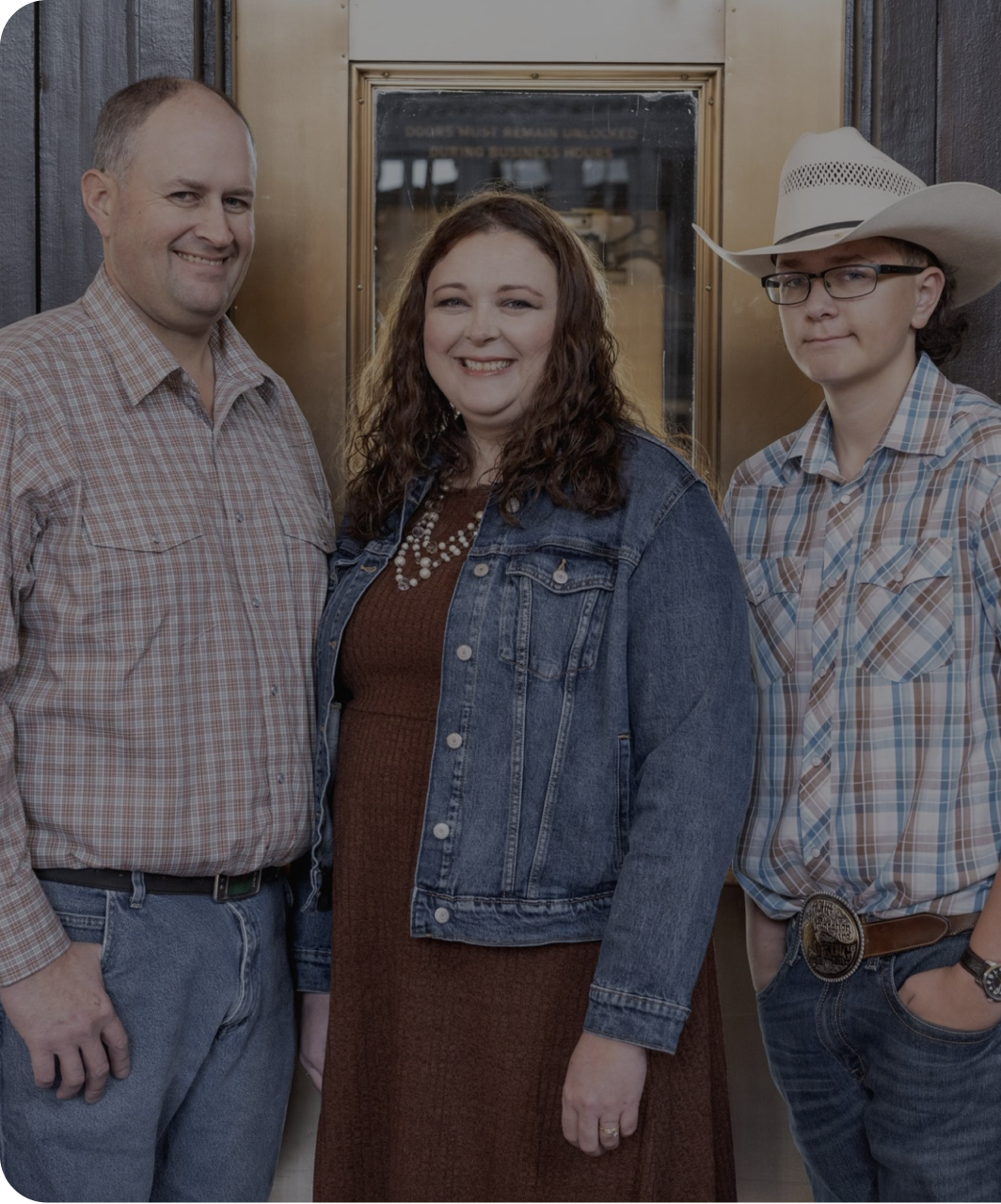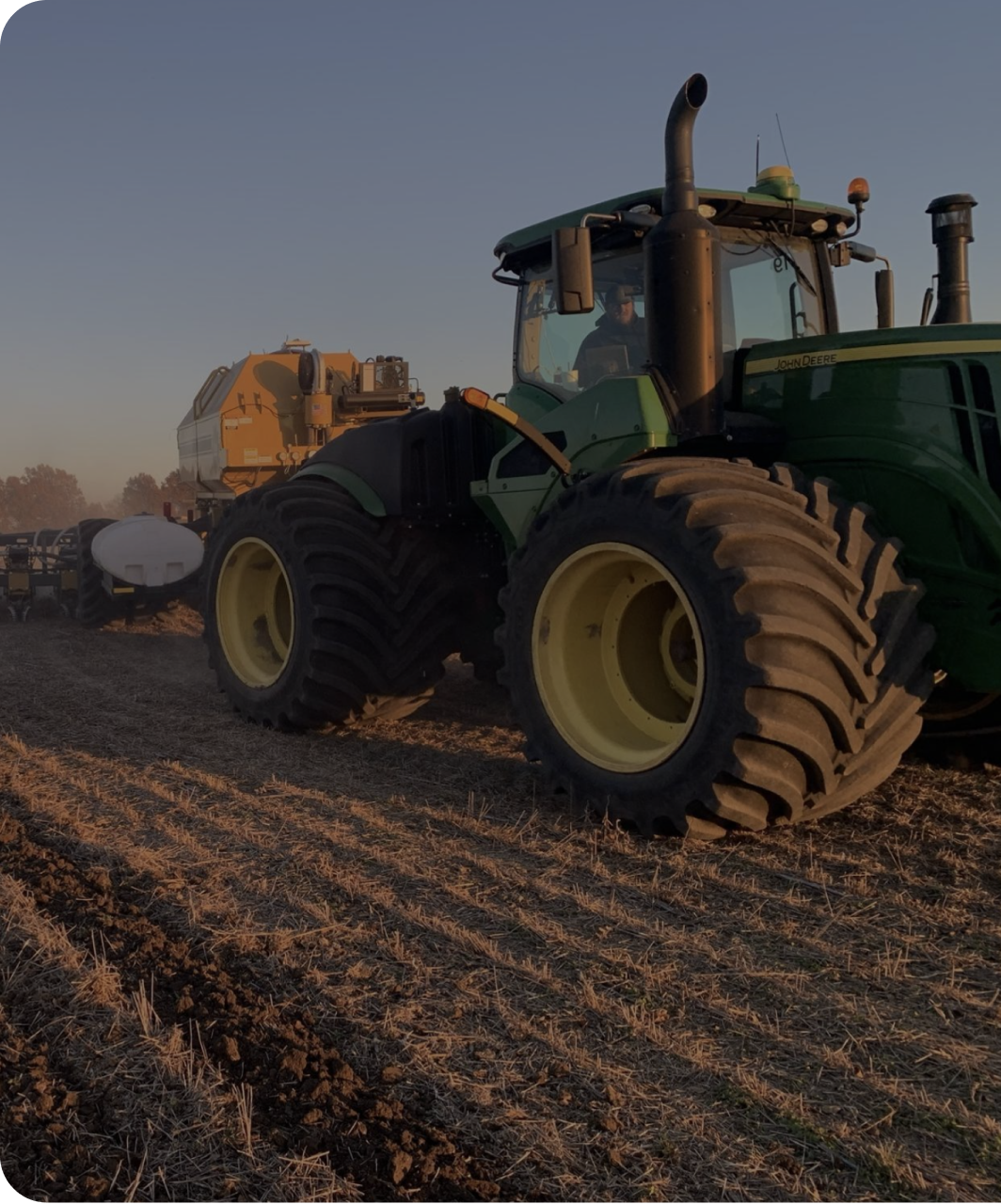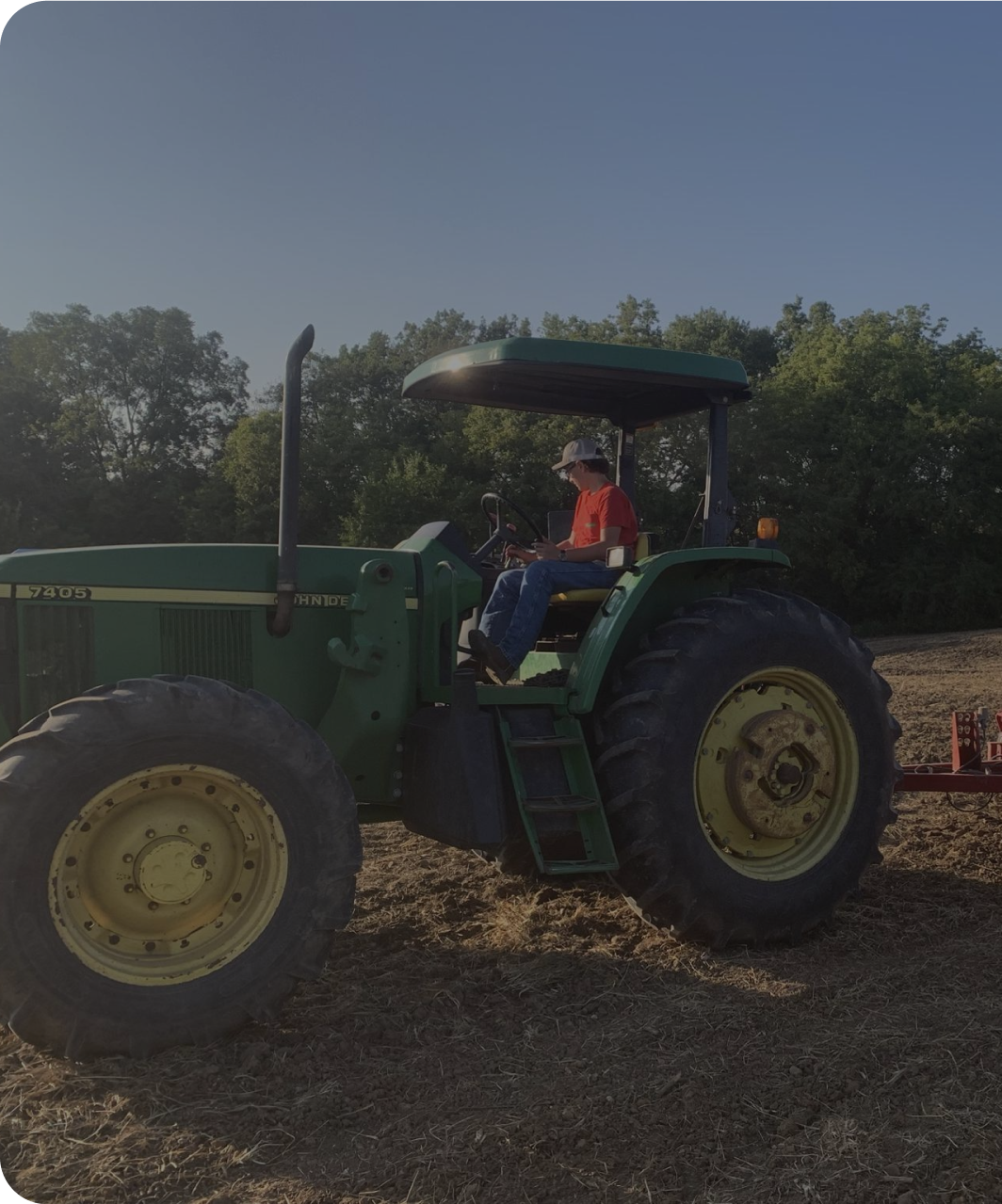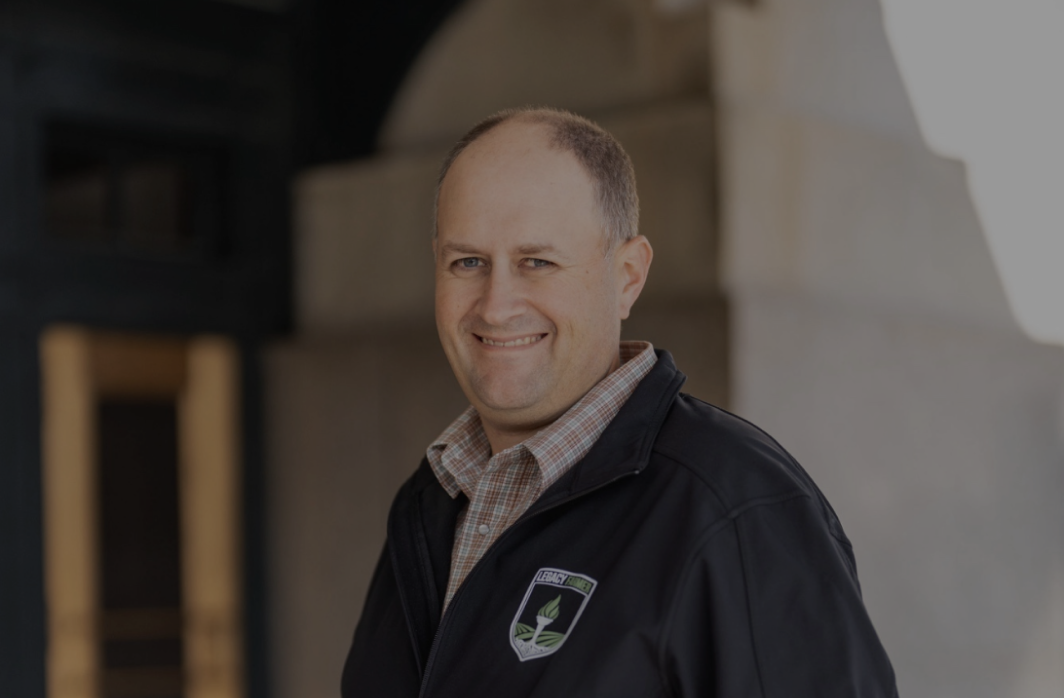-


Brooks Reid
Brunswick, MOGiving other farmers a hand comes naturally for Brooks, whose grandpa and dad were also farmers. Brooks is now starting a podcast to share with other farmers what he’s learned operating his own farm.
Operation overview:Acres:2,500Crops:winter-wheatsoybeancornTillageStrip-till; no-till soybeans
What Drives Brooks?
Brooks is a trained agronomist who has expanded his understanding of soil and plant health while figuring things out on his farm. He knows farming can be a lonely career, and that mentors and support networks are in short supply. He’s giving back and helping other farmers by sharing his knowledge and experiences.


Fertility Program
Brooks addresses crop nutrition in his soil and plants by:
- Spreading lime in the fall at variable rate.
- Application of K, and sometimes P, when strip-tilling.
- Holding off on N application until the crop is up (he applies it in-season where and when it needs it to minimize loss).
- Adjusting in-season with foliar or sidedress (typically N blended with S, B, K, Zn and humic/fulvic acid).


Why Biologicals
“Biology in the soil is important, impacting seed germination, plant health and yield. Plants take up nutrients through the roots, but if the roots don’t reach the nutrients, biology is what gets those nutrients into the root zone.”
THE LATEST ON REID FARMS
WINDING DOWN
Harvest is winding down for Brooks Reid. He’s planting wheat, winterizing equipment and enjoying one of his favorite tasks — digging into his post-harvest data.
Catch up with him to hear what else he’s up to as he wraps up 2024!
"I’m just doing a little playing around, and it’s that corn crop that is getting with it. It was over knee-high by the Fourth of July, so I’m interested to see how it turns out."
- Brooks ReidVisit our Next Farmer:
Ryan DrozdFor Ryan and his family, farming together makes good sense (and cents). While his brother Jake drives their agronomic choices, Ryan is the financial guy making sure each decision they make results in a profit at the end of the season.
Get Updates From Our Farmers
Sign up for our newsletter, Advanced Crop Nutrition Insights, to receive monthly updates about Frontier Fields farmers.
PREVIOUSLY: REID FARMS
-
OCTOBER 2024
BUSHELS IN THE BIN
Brooks Reid is busy in the combine this month, but not too busy to take a look at the data he’s gathered. By analyzing harvest data, he can start to draw conclusions about how his management decisions helped him put more bushels in the bin.
Catch up with Brooks to hear more about his harvest season!
-
SEPTEMBER 2024
PATIENTLY WAITING
Brooks Reid isn’t in a hurry for harvest. He’s not worried about his to-do list, though — because his patience is all part of his approach to plant health and helping his crops maximize their yield potential.
Hear from Brooks about his crop management strategy and his thoughts leading up to harvest.
-
AUGUST 2024
A CLOSE EYE ON THE KERNELS
When you’re looking for a bushel increase of around 4 bu/ac, it can be hard to see the difference in counting kernels or scouting fields. But Brooks Reid is still confident that BioPath® is helping him boost his yield potential.
Join Brooks and special guest Agronomist Chad Becker as they go beneath the surface to find out how BioPath is working for his crop.
-
JULY 2024
HITTING THE BOOKS WITH BROOKS
Now that Brooks’ crops are safely in the ground, he hit the books, researching how micronutrients like zinc and manganese are important for plant health and, subsequently, how important they are in fighting off disease, weed and insect pressures during the growing season.
“I’ve got pretty healthy corn with minimal insect pressure, which is interesting compared to what I’ve been hearing from some other farmers in my area. I attribute that, possibly, to my change in management practices this year.”
After finding that zinc is closely associated with important plant defense pathways, he decided to increase his zinc application, running the micronutrients in the planter and planning for a midseason pass, which seems to be paying off.
“My replant corn has an excellent stand. It’s coming along really nicely. We got our in-season nitrogen and nutrient pass on. Then, we had moisture that helped get those nutrients into the root zone to help the crop take up those nutrients.”
Brooks also took a few lessons from his wheat crop, which he says is the best he’s ever raised. Because that crop came off early and successfully, Brooks is taking the opportunity to try intercropping with corn.
-
JUNE 2024
BURNING THE MIDNIGHT OIL
June kicked off for Brooks Reid with every farmer’s least favorite thing — replanting.
“Thankfully what we replanted came up fast and has a beautiful stand, but it added a little more time to our process.”
About 75% of corn on Reid Farms was planted within three days in early spring, but then 40% of that had to be replanted, which caused other tasks like sidedressing and planting soybeans to be pushed back.
“This season we’ve just had to find what we can do with the weather that we’ve got. One night I planted until I ran out of seed around 4 a.m. I drove back to the shop, kicked back to take a nap and was back at it a few hours later. That was a rough day.”
Early-planted corn sat in the soil and just burned up seed energy, so when it was time to emerge, it struggled. One of Brooks’ BioPath® fields was also a replant field, but Brooks isn’t too discouraged quite yet.
“We were behind schedule getting our sidedress application, but I’ve sidedressed corn late before and it’s late — by my perspective — but it’s not a failure quite yet.”
Tissue tests are promising, showing that nutrients are in good shape despite the less-than-desirable start to their life. Brooks said his eyes are on the growing crops now and no matter how the rest of the season shakes out, he’s sure to learn something.
-
MAY 2024
Every day brings a new opportunity for Brooks to impact his growing season.
For Brooks Reid, every growing season is exciting as he looks for new ways to improve how he grows on the farm. This year he is testing BioPath® in a sidedress application. Join him and his assistant, Steven, as they discuss what they hope to see from their trial this year.
-
APRIL 2024
WEATHER-WATCHING ECLIPSES ALL
Farmers are always watching the weather, but this time of year, Brooks Reid’s eyes are always on the skies — and the ever-changing forecasts.
“We’ve had a lot of warm weather this spring, but we still have some overnight freezing temperatures right now. Cold and wet isn’t a great combination, so we held off on planting earlier this month. And I was surprised that others in the area were doing the same.”
Since Brooks lives close to where the solar eclipse traveled, he’s watching to see if that will impact the weather, because rainstorms seemed to follow the path of the 2017 eclipse.
“Weather is always a concern. We get one shot to get the season kicked off and emergence is really important. If you don’t have good emergence, then you’re gonna struggle.”
In the meantime, Brooks has completed some drainage work on his bottom ground and is in the process of spraying a burndown herbicide on his no-till ground. With that burndown pass, he included micronutrient fertilizer to prime the soil for the microbes so they can get to work.
-
March 2024
Brooks taps into nature to unlock yield potential
Brooks Reid is always looking for ways to work with nature to improve his yields. Walking his fields regularly is key in doing that, so he’ll have his “boots on the ground” to learn how BioPath can help.
Keep up to date with Brooks as he navigates Midwest farming challenges and works to raise the best crops possible.
-
February 2024
Adapting For Unique Fields
Brooks’ fields have some significant physical obstacles he has to navigate around. For example, he has hill ground with erosion challenges so he has several terraces. In the field where he planted his BioPath trial last year, he had to take long passes in the shape of a horseshoe because it had once been a part of two different farms.
“I chose that field for the trial because there’s a definite difference in the soil biology for each side of the field — one part of the field was only used for pasture, while the other had been continuous soybeans. I thought it would be an interesting comparison.”
While he didn’t see much of a yield bump last year, he did see a difference in the tissue samples between BioPath and the control on both sides of the field. This year, he wants to repeat the BioPath trial to make sure the positive result wasn’t just site-specific from where he pulled the samples. In addition to the in-furrow trial, he also plans to use it in sidedress to see if the warmer soil temperatures boost the biological response.
Mosaic Biosciences™
Our portfolio of biologicals features results-driven products designed to increase crop potential and performance while helping improve soil health.
Explore BiosciencesTruResponse®
See where our biologicals are working and where they are not. Get the data you need to put Mosaic Biosciences to work for you.
MENTIONED ON THIS PAGE
